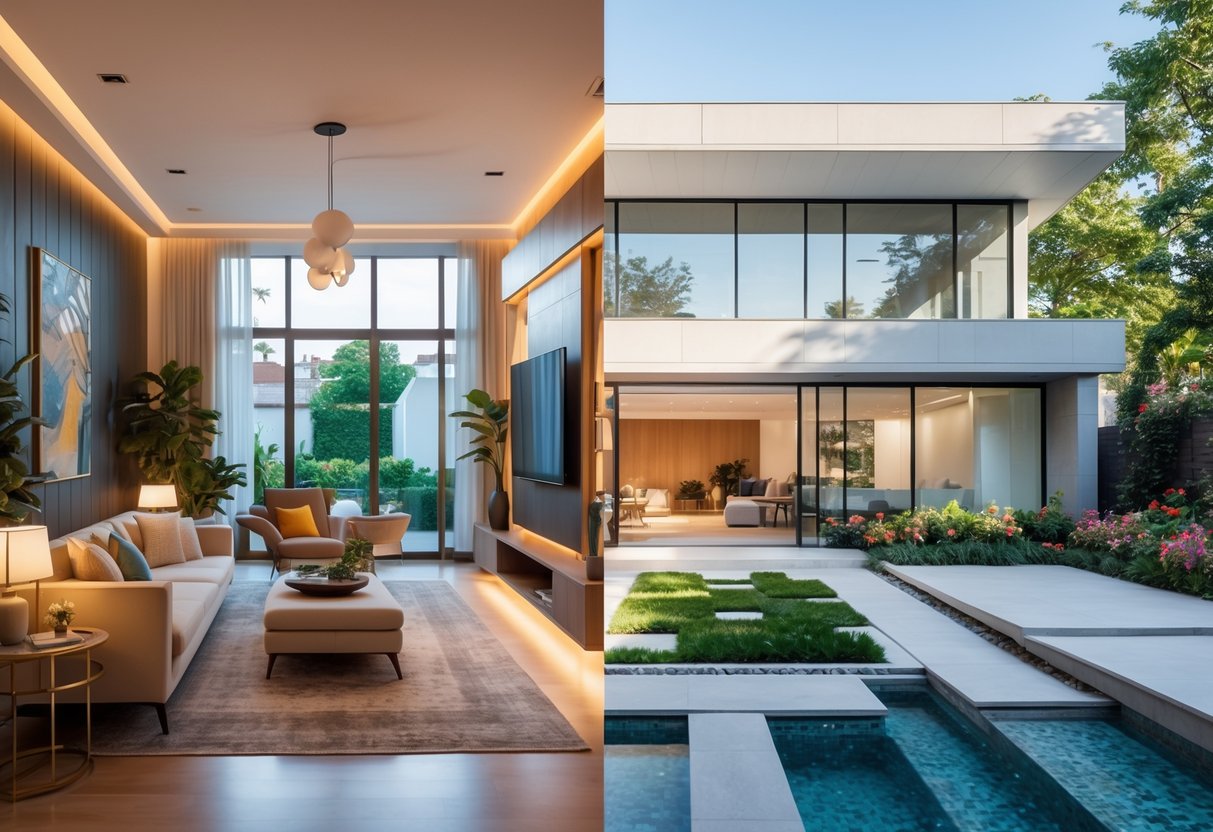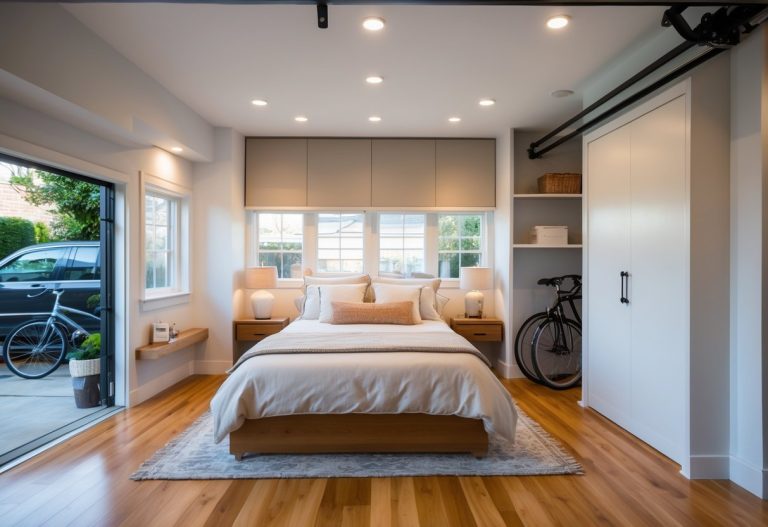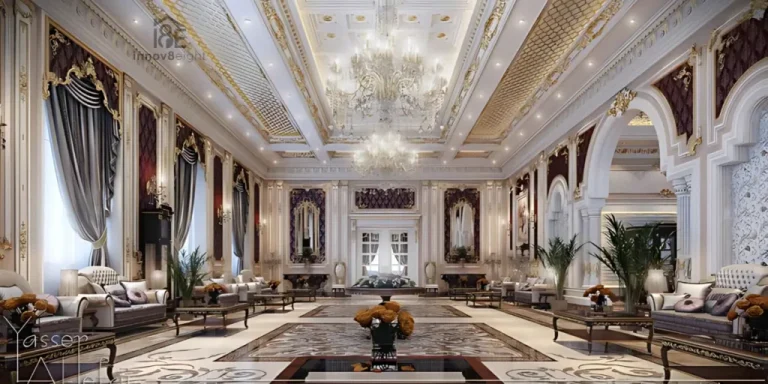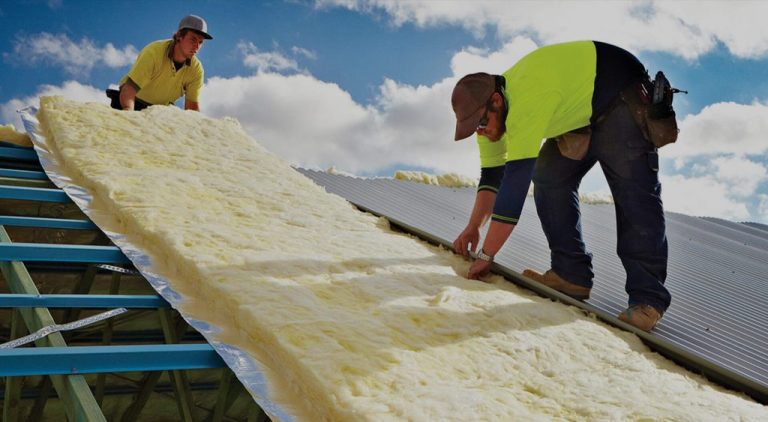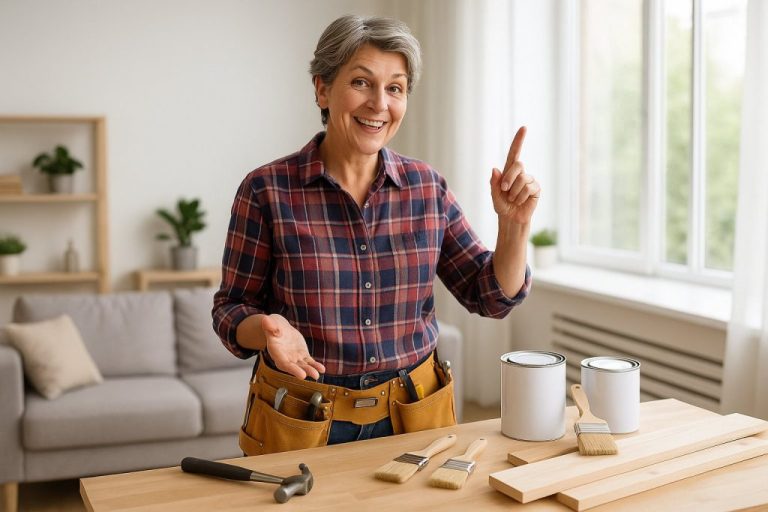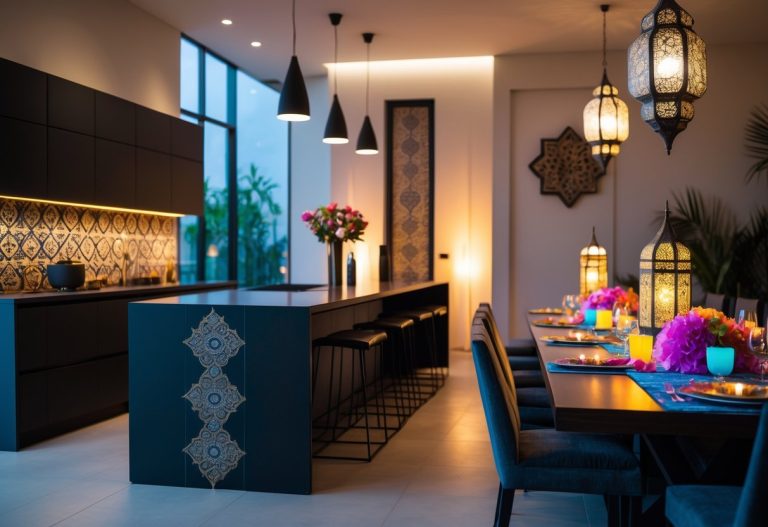When you think about design, you might picture a cozy living room or a striking building outside. Both interior and exterior design shape how spaces look and feel, but they focus on very different areas. Interior design is about making the inside of a space comfortable and functional, while exterior design deals with the outside appearance and how buildings fit into their surroundings.
You’ll find that interior design works with existing walls, choosing colors, furniture, and lighting to improve your mood and daily life. Exterior design, on the other hand, focuses on creating a strong first impression and making outdoor areas both beautiful and useful.
Understanding these differences can help you decide what matters most for your home or project. Whether you want to freshen up your indoor space or boost your home’s curb appeal, knowing the key points will guide you toward the right design choices.
Key Differences Between Interior and Exterior Design

Understanding the main differences between interior and exterior design helps you see how they serve different purposes. These differences are clear in their focus, materials, style choices, and how they affect the spaces you use every day.
Core Principles and Focus Areas
Interior design focuses on making indoor spaces useful and comfortable. It works with rooms inside buildings, like living rooms, offices, and kitchens. You pay attention to lighting, furniture layout, and creating mood that fits your daily life or work.
Exterior design deals with the outside of buildings. You consider things like weather protection, curb appeal, and overall building shape. It also involves how the building fits into the environment and the neighborhood. You focus on making the outside look good and work well with nature and people moving around it.
Material Selection and Durability Requirements
When designing interiors, you pick materials based on comfort, safety, and style. You want fabrics that feel good and wood or tile that looks nice. Since these materials are mostly protected from the weather, durability means resisting wear and stains.
For exterior design, materials must handle rain, sun, wind, and temperature changes. You choose strong, weather-resistant materials like brick, stone, metal, or treated wood. These materials need to last a long time and require little upkeep. Your material choices protect the building structure and maintain its look over time.
Aesthetic Approaches and Visual Priorities
Inside, you can use color, texture, and lighting to change how the space feels. You emphasize comfort and personal style to create inviting areas. Your goal is to balance function and beauty, so rooms work for their purpose but also look appealing.
Outside, aesthetics are about making a good first impression and fitting the building into its surroundings. You focus on shape, proportion, and materials that match the building’s style and neighborhood. Visual priorities include rooflines, windows, doors, and landscaping to give a unified look.
Impact on Functional Spaces
Interior design impacts how you move through and use rooms. Good layouts make it easy to work, relax, or entertain. You think about traffic flow, storage, and how light enters spaces to improve daily comfort and productivity.
Exterior design impacts safety and utility outside. This includes paths for walking, driveway placement, and outdoor living areas like patios. You also consider privacy, drainage, and energy efficiency through windows and walls. These elements affect your home’s convenience and how you interact with outdoor spaces.
Applications and Signature Styles

Design brings life and function to spaces, shaping how you live, work, and feel. Each space type demands different approaches and styles to fit specific needs and atmospheres.
Residential Uses and Trends
In homes, interior design focuses on comfort, style, and personal taste. You choose colors, furniture, and layouts to create inviting and practical living areas. Popular trends today include open floor plans and natural light use, which make rooms feel bigger and brighter.
On the exterior, design matters for curb appeal and protection. You consider roof shapes, siding materials, and landscaping. Modern homes often use clean lines and mixed materials like stone and wood for a fresh look.
Both interior and exterior design in homes aim to reflect your lifestyle while improving comfort and energy efficiency.
Commercial and Public Spaces
When designing offices, shops, or public buildings, function drives most decisions. Interior spaces use durable materials and flexible layouts to support work and customer flow. You’ll see clean, organized spaces with clear signage and practical lighting.
Outside, commercial buildings must stand out and invite visitors. Think bold colors, large windows, and distinct signs. Materials used are often weather-resistant and low-maintenance to handle heavy use.
Together, interior and exterior design work to create welcoming, professional environments that meet business needs.
Popular Style Inspirations
Several popular design styles guide both interior and exterior choices. You might lean toward Modern, which emphasizes simplicity, straight lines, and neutral colors. Or choose Contemporary, which updates trends and can mix bold colors with different textures.
For exteriors, Craftsman style brings handmade details like wood beams and stone accents. Scandinavian styles focus on natural light and minimalism inside, with simple, functional exteriors outside.
Knowing these styles helps you pick designs that fit your personality and space purpose. You can mix elements to create your perfect look.
